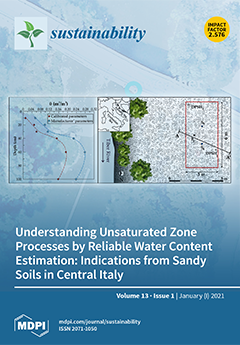The emergent plants may differ in their capacity to assimilate nutrients from eutrophic water bodies, so the utilization of suitable emergent plants is the key part for successful restoration of shallow eutrophic lakes and rivers. This research applied the depletion method to study the kinetics of uptake of nutrient (
,
,
) in different nutrient stresses by the five emergent aquatic plants (
Acorus calamus L.,
Typha orientalis, Lythrum salicaria L.,
Sagittaria trifolia L.,
Alisma plantago-aquatica Linn) in the riverine zones of Dashi River (39°30′–39°40′ N, 115°59′–116°5′ E), a shallow eutrophic river located in Fangshan District, Beijing. The results showed that at the three phosphorus levels,
A. calamus and
A. plantago-aquatica had the highest maximum uptake rate values for
under low to moderate phosphorus conditions, and high phosphorus, respectively.
T. orientalis had the highest maximum uptake rate values for
at all phosphorus concentrations, while the Michaelis-Menten constant values of
L. salicaria and
A. plantago-aquatica were smaller. At the three nitrogen levels, the maximum uptake rate values for
were the greatest for
A. plantago-aquatica at the low to moderate nitrogen levels and
L. salicaria at high levels. Meanwhile,
T. orientalis and
L. salicaria had the smallest Michaelis-Menten constant values. In this study, nitrogen microbial transformations, such as nitrification, denitrification and their coupling were not measured and their role in measuring kinetics was not assessed. Thus, achieved results shall be considered as a synthesis of several processes mediated by plants, a theoretical guidance to the selection of plant species for phytoremediation of polluted water bodies with different nutrient stresses for quality improvement around the diverse rivers in Haihe River basin.
Full article





